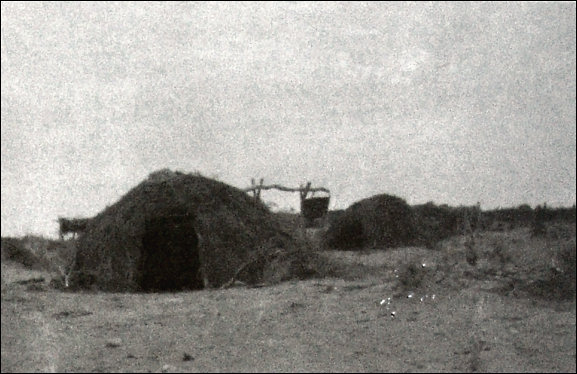Witjira National ParkAttractions Dalhousie Springs Indigenous Heritage and Culture
Aboriginal Heritage
Well before the sighting of the Dalhousie mound springs by Europeans, Aboriginal groups had used this site for ceremony and rituals for many generations. This was the area of the Lower Southern Arrente people. However, the Luritja, Arabunna and Wankangurru people gathered here in times of drought and for ceremonial purposes. Evidence of the spring’s significance to Aboriginal people has been documented by the large camp sites found at the springs, some of which are thousands of square metres in size, with vast number of stone artefacts found scattered around the area.2 Dreaming trails crisscross the area and there is evidence of bygone habitation. The Aboriginal peoples’ strong cultural ties to the land are still evident today in their custodial role and participation in joint management of Witjira National Park. This management agreement was established in October 1995.
Source: Witjira National Park signage

courtesy of Royal Geographical Society of South Australia
Indigenous Culture and Tradition
The Witjira-Dalhousie Mound Springs is rich in Indigenous tradition with an exceptional density of story or song lines, most of which are associated with mound springs (Hercus and Sutton 10985; 64).
Major song lines originate at Witjira-Dalhousie or pass through the place. The incredible linguistic work carried out by Dr. Luise Hercus over 35 years, found that each individual spring at Witjira-Dalhousie had a story associated with it, although some of these stories are now lost. She recorded twenty four song lines that originate or passed through Witjira-Dalhousie Mound Springs that include:
- the Kestrel Story
- the Printi and the Goanna Women
- the Rain Ancestor (Anintjola)
- the Dog Story
- the Frill Neck Lizard Story
- the Boy from Dalhousie
- the Goanna Party and the Echidna Woman
- Old Man Kingfisher and Old Woman Kingfisher
- the Blind Rainbow Snake
- Old Man Rainbow Snake
- Perentie and the Boys
- the Big Boys
- the Perentie Goanna Camp
- the Perentie Staked His Foot
- the Two Boys song line (Kingfisher Dreaming)
Unlike the traditions associated with the mound spring groups at Lake Eyre and Lake Frome, the tradition for Witjira-Dalhousie explains why some of the mound springs at Witjira-Dalhousie produce hot water (Hercus nd.; Hercus and Sutton 1985).
The mound springs in the Witjira-Dalhousie, Lake Eyre and Lake Frome areas play a historical and culturally important place in Aboriginal history and tradition. During the dry seasons and periods of drought, the Aboriginal people would retreat to the mound springs. The mound springs in these areas were associated with and joined to each other by traditional Aboriginal song and story lines and are often associated with rain-making rituals.
One of the most important song lines is the story of the Two Boys (which is a Kingfisher ‘Dreaming’). The story tells of the Two Boys crossing the Simpson Desert, through Queensland and back to just north of Witjira-Dalhousie in the Finke River area. The song line contains information on every waterhole or soak that was known in the Simpson Desert. Following this song line meant you could cross the Simpson Desert using available water, along the route.3
Footnote & References
- Australia’s desert springs. Retrieved July 27, 2012, from http://www.desertfishes.org/australia/habitats/springs/springen.shtml
- Australian Government: Australia’s National Heritage – Witjira-Dalhousie Springs, South Australia. Dalhousie Mound Springs Area (105819_05.PDF 114 Kb). Retrieved July 28, 2012
- Great Artesian Basin Springs: Witjira-Dalhousie. AHC final assessment report: Witjira-Dalhousie Springs (PDF 104 Kb). Retrieved July 28, 2012
Witjira National ParkAttractions Dalhousie Springs Indigenous Heritage and Culture
South AustraliaAdelaide Hills Alberrie Creek Algebuckina Bridge Belair National Park Kangaroo Island Kanku–Breakaways Conservation Park Mount Gambier Oodnadatta Oodnadatta Track Orroroo Port Augusta Port Germein Wabma Kadarbu Conservation Park William Creek Wilpena Pound Witjira National Park Woomera
